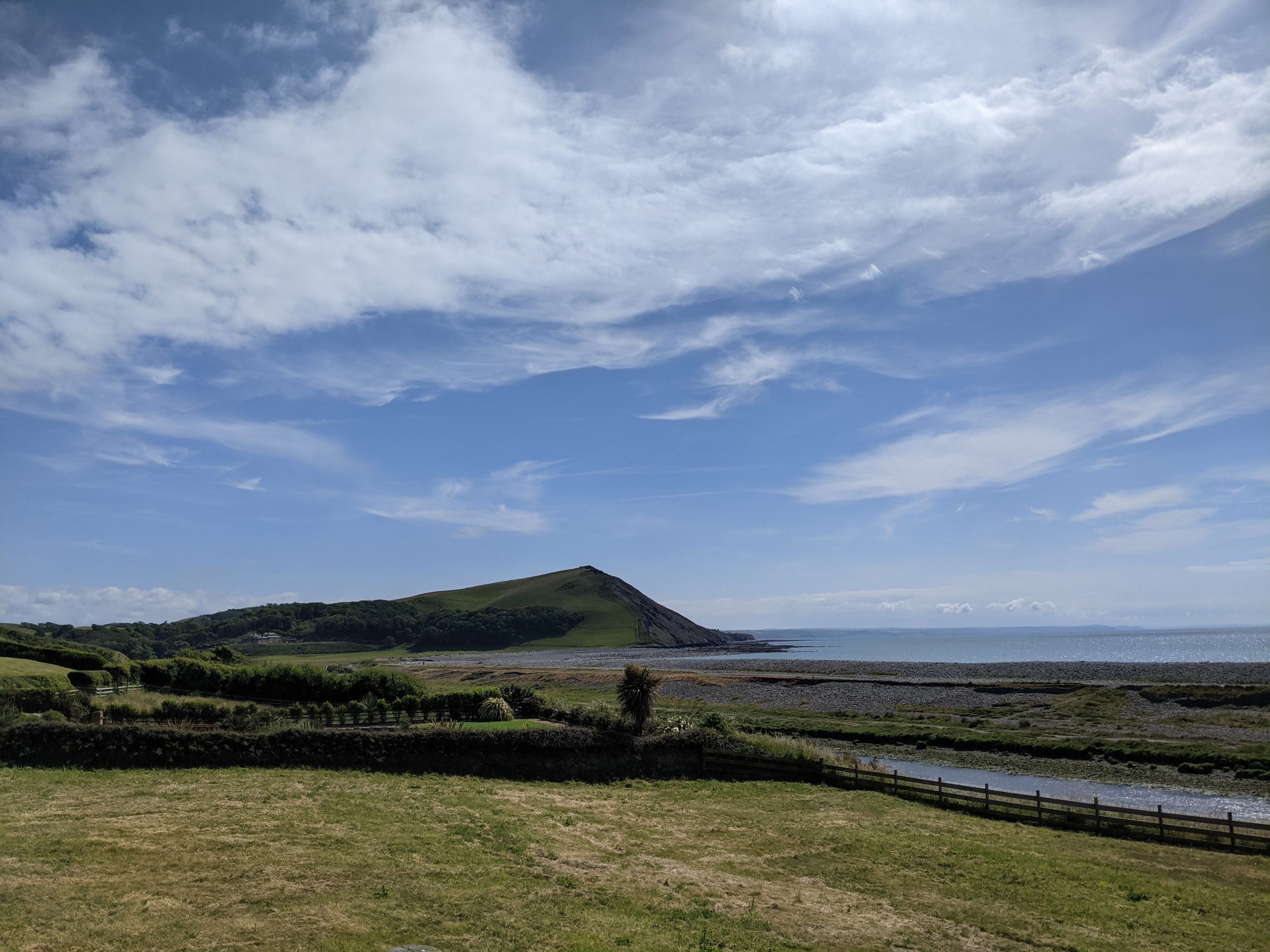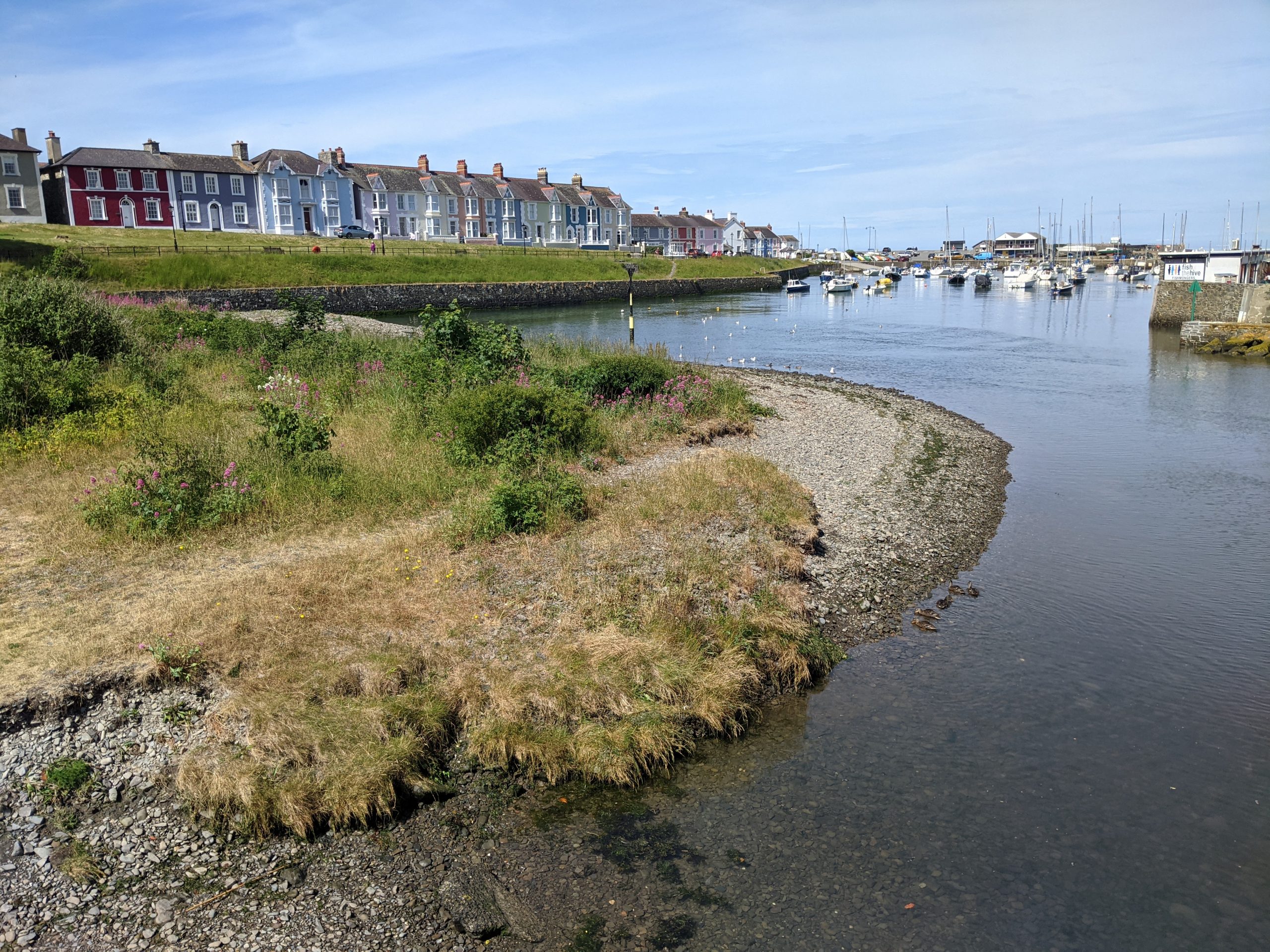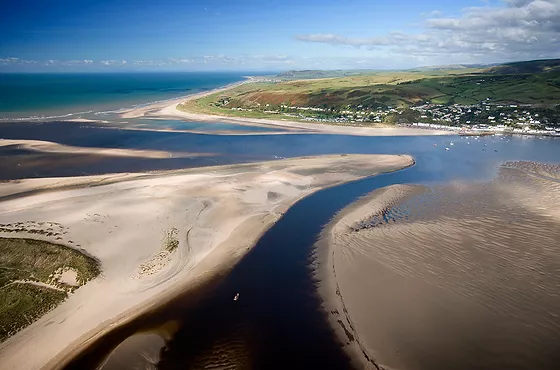Principle 1: Making space for nature
How can GBI help to make space for nature?
Seafront at Aberystwyth

In its State of Nature Report 2019, Natural Resources Wales (NRW) highlighted how environmental pressures are causing global biodiversity decline at an unprecedented rate.
The rate of species extinctions is accelerating – with 17% of species in Wales at risk of extinction. Wales has already lost birds like turtle doves and corn buntings. This is being driven by issues including agricultural management, urbanisation, pollution, hydrological change, invasive species and poor woodland management.
Climate change is also likely to have a range of impacts on habitats as conditions become unsuitable for certain species to thrive.
Without good green and blue infrastructure alongside increasingly urban and managed landscapes, we undermine nature’s ability to be productive, resilient and adapt to a changing climate.
However, on a national scale there are signs of hope – woodland cover in Wales has risen from 4% in the early 1900s to 15% today, and polecats are making a slow recovery. The Nature Recovery Action Plan for Wales (2020-21) focuses on rebuilding nature recovery networks.
What does national and regional policy say?
One of the seven well-being goals set out in the Well-being of Future Generations (Wales) Act 2015 is a ‘resilient Wales’. This requires the maintenance and enhancement of a biodiverse natural environment and creating capacity to adapt to climate change.
‘Future Wales’ The National Plan 2040 sets the direction for future development in Wales. Policy 9 (Resilient Ecological Networks and Green Infrastructure) requires identified areas to be safeguarded as ecological networks, and to identify opportunities for GBI to be maximised as part of placemaking initiatives.
The National Natural Resources Policy (2017) aims to help fulfil the goals of the Well-being of Future Generations (Wales) Act 2015 by delivering nature-based solutions. It highlights that investing in natural resources can both increase ecosystem resilience and deliver health and well-being benefits.
The Environment (Wales) Act 2016, places specific duties on public bodies. These require them to maintain and enhance biodiversity and promote the resilience of ecosystems. The Act also made it a duty for Natural Resources Wales to produce Area statements – including one for the Mid Wales Area.
‘Improving biodiversity’ is one of the key themes – looking at how we can make decisions that help make our ecosystems more resilient to the challenges and emergencies we face, such as climate change? It recognises there are no ‘quick fixes’ and highlights the importance of creating networks of nature sites, educating a range of groups and reducing non-native species.
The Strategic Management of Natural Resources (SMNR) principles developed by NRW is designed to bring these pieces of legislation into action. At the heart of SMNR is the drive to maintain and enhance resilient ecosystems, using the DECC framework (Diversity, Extent, Connectivity and Condition). There is a strong focus on strengthening links/corridors for wildlife and people out into the countryside from town.
Building on this, the updated Nature Recovery Action Plan for Wales (2020-21) reflects the need to build resilient ecological networks across the country’s whole land and seascape. This forms the basis for the Ceredigion Nature Recovery Action Plan matrix – an ongoing process to identify priority actions and the resources needed to implement them.
The Welsh Government has produced national-level habitat strategies – including Woodland for Wales. This 50-year strategy provides a framework to ensure Wales will be known for its high-quality woodlands that enhance the landscape, are appropriate to local conditions and have a diverse mixture of species and habitats.
The Strategy highlights that Wales is one of the least wooded countries in Europe, with woodland covering only 15% of the land area, compared to the EU average of 38%. It sets a target to increase cover by at least 2000 hectares per annum from 2020 to 2030.
What does local policy say?
At the time of writing, Ceredigion’s replacement Local Development Plan (LDP) has been on a temporary pause following consultation with Welsh Government. This is due to ongoing concerns over phosphates pollution levels damaging the area’s water ecosystems and species. There is no specific time frame for the pause, but in the meantime Ceredigion’s LDP will continue to guide planning in the County.
Policy DM14 (Nature Conservation and Ecological Connectivity) and DM15 (Local Biodiversity Conservation) of Ceredigion’s existing Local Development Plan (LDP) require the enhancement of biodiversity, geodiversity, and ecological connectivity between local sites in all development proposals. They require that wildlife corridors and wildlife enhancements are incorporated into development through landscaping and building design.
In 2020, the Council assessed Ceredigion’s existing green infrastructure. The assessment identified the following objective related to biodiversity:
- To increase the provision of woodlands and restoration/expansion of peat bogs.
Ceredigion’s Corporate Strategy (2017 – 2022) includes principles relating to access to nature. It sets out an ambition for Ceredigion to implement a Nature Recovery Plan and notes improved biodiversity is a key strategic outcome.
What are the challenges and pressures this GBI strategy needs to address?
Stakeholders engaged during the development of this Strategy told us that, while the rural hinterlands are rich in natural assets, there are few biodiverse green spaces and limited tree cover within Ceredigion’s towns. This highlights a need for more ‘stepping stone’ habitats through Ceredigion’s built up areas and stronger links to allow people to access the countryside around their towns.
According to Woodland for Wales, urban tree canopy cover in Wales was 16.9% in 2009 – mid range in world rankings. However, canopy cover is falling. According to a Natural Resource Wales report, Ceredigion’s mean canopy cover within towns for 2013 was estimated at 15.7%, down from 17.2% in 2009.
Around the edge of Ceredigion’s towns, ‘improved grassland’ dominates – which has limited biodiversity value. More nature-rich grassland is needed in order to improve connectivity of habitats for wildlife. Within the towns and immediate surrounding areas (within 2km), grasslands are the predominant type of habitat. This is followed by woodland habitat.
The water environment around Aberaeron

Within the wider landscape surrounding Ceredigion’s towns, there are multiple international and national nature conservation designations – including Special Areas of Conservation (SACs), Special Protection Areas (SPAs), Ramsar sites, National Nature Reserves and over 100 Sites of Special Scientific Interest (SSSIs) – see the interactive map for further detail on these designations.
In the north (north of Aberystwyth), the County overlaps with the Dyfi Biosphere – the only biosphere in Wales. It was designated by UNESCO as somewhere where locals work with biodiversity and its sustainable use. The biosphere is anchored by protected habitats including raised peat bogs, ancient woodland and coastal and estuary habitats.
The Dyfi Biosphere (Source: Dyfi Biosphere)

Key challenges within the surrounding landscape include the impact of intensive farming on the landscape – including the impact of pesticides, soil degradation, pollution of rivers and fragmentation of habitats. There are also challenges around woodland management
Fragmentation of habitats across Ceredigion is a key concern for biodiversity. Key drivers include intensive farming and poorly planned urban development. A strategic approach will be required in order to identify a resilient network of areas to protect and enhance in order to allow nature to recover. Stakeholders engaged during this Strategy highlighted that nature can suffer when nature is not properly planned for as part of new development.
Finally, one of the most serious challenges facing Ceredigion relates to water quality. Nutrient loading of rivers is having severe adverse impacts on biodiversity and requires urgent action.
A river in Aberaeron

“While there are examples of positive development for GBI, overall there appears to be a continued decline with the destruction of habitats by felling trees, removing mature hedgerows and areas of scrub. Equally there are good examples of rivers providing corridors for nature, but also examples of pollution from septic tanks and run-off from some agricultural activities.”
– Stakeholder comment (survey)
These nutrients (primarily phosphates) enter waterways from human and animal waste, laundry, cleaning, industrial chemicals, and fertiliser run-off. They cause explosive growth of aquatic plants and algae which can lead to low oxygen levels – essentially suffocating the river and its associated aquatic life.
Of 107 water bodies assessed by Natural Resources Wales in 2017-19, only 39% passed the new phosphorus targets and 61% failed. Most of the failing water bodies were in Mid and South Wales. This includes the River Teifi, which had a failure rate of 50%.
It will also be important to provide Ceredigion’s watercourses with enough “room to breathe” and adapt to climate pressures (see Principle 4). Culverted or canalised watercourses are typical within Ceredigion’s towns and there is only limited bankside space for species which depend on these “margin habitats”. All of this has negative impacts on biodiversity.
Summary of key issues
- The need to better support and connect biodiversity by ‘greening’ built-up areas, including boosting urban tree cover.
- Fragmentation of habitats – driven by factors including intensive farming and new development.
- “Nutrient loading” of the County’s rivers – and the severe resulting impacts on water quality and aquatic life.
- The need for biodiversity to adapt to the inevitable impacts of climate change – including giving watercourses ‘room to breathe’.
- The need to take greater account of nature networks as part of the planning of new development.